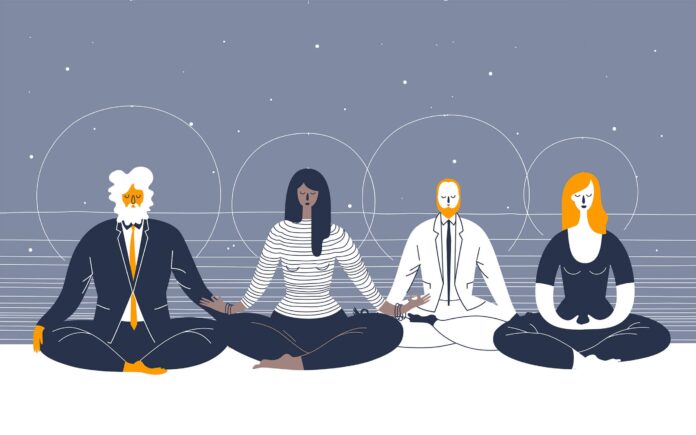The Power of Mindfulness: How to Reduce Stress and Improve Focus
In today’s fast-paced world, our minds are constantly bombarded with distractions, stressors, and endless to-do lists. We often find ourselves dwelling on the past or worrying about the future, leaving little room for the present moment. This is where mindfulness comes in.
Mindfulness is the practice of being fully present and aware of our thoughts, feelings, and surroundings without judgment. Research shows that mindfulness can significantly reduce stress, enhance focus, and improve overall well-being. In this blog, we’ll explore the science behind mindfulness, its benefits, and practical ways to incorporate it into daily life.
1. What is Mindfulness?
Mindfulness is a mental state achieved by focusing one’s awareness on the present moment while calmly acknowledging and accepting one’s thoughts and emotions. It has roots in Buddhist meditation but has been widely adopted in modern psychology and wellness practices.
🔹 Present Awareness – Being fully engaged in what you’re doing at the moment.
🔹 Non-Judgmental Observation – Accepting thoughts and feelings without labeling them as “good” or “bad.”
🔹 Intentional Focus – Training your mind to avoid distractions and stay centered.
Mindfulness is not about clearing your mind but rather about observing your thoughts without getting caught up in them.
2. The Science Behind Mindfulness
Numerous scientific studies have proven the benefits of mindfulness. It has been found to:
🔹 Reduce Cortisol (the Stress Hormone) – Regular mindfulness practice lowers stress levels.
🔹 Improve Focus and Memory – Increases gray matter density in the brain’s prefrontal cortex, which is responsible for attention and decision-making.
🔹 Enhance Emotional Regulation – Helps manage anxiety, depression, and negative thought patterns.
🔹 Boost Immune Function – Supports overall physical health by reducing inflammation and strengthening the immune system.
🔹 Lower Blood Pressure – Helps relax the nervous system, improving heart health.
Even just 10 minutes a day of mindfulness can create measurable changes in the brain over time.
3. Practical Mindfulness Techniques
Mindfulness doesn’t require hours of meditation. Here are some simple ways to incorporate it into your daily routine:
1. Mindful Breathing 🌬️
One of the easiest ways to practice mindfulness is by focusing on your breath.
🔹 Find a quiet place and sit comfortably.
🔹 Close your eyes and take slow, deep breaths.
🔹 Pay attention to how the air feels entering and leaving your body.
🔹 If your mind wanders, gently bring your focus back to your breath.
Try This: Next time you feel stressed, pause and take three deep breaths before reacting.
2. Body Scan Meditation 🧘♂️
This technique helps you reconnect with your body and release tension.
🔹 Lie down or sit in a comfortable position.
🔹 Close your eyes and bring awareness to different parts of your body, starting from your toes and moving up to your head.
🔹 Notice any areas of tension and consciously relax them.
Try This: Do a 5-minute body scan before bed to promote relaxation and better sleep.
3. Mindful Eating 🍽️
We often eat while distracted—scrolling through our phones or watching TV. Mindful eating helps us fully enjoy and appreciate our food.
🔹 Before eating, take a moment to observe your food’s colors, textures, and aroma.
🔹 Chew slowly and savor each bite.
🔹 Pay attention to flavors and how your body feels while eating.
Try This: At your next meal, put your phone away and eat without distractions.
4. Mindful Walking 🚶♂️
Walking can be a great opportunity to practice mindfulness.
🔹 Walk at a natural pace and focus on each step.
🔹 Notice how your feet feel against the ground.
🔹 Pay attention to sounds, smells, and the feeling of the air on your skin.
Try This: Take a 5-minute mindful walk during breaks to refresh your mind.
5. Gratitude Practice 🙏
Gratitude shifts our focus from what we lack to what we have. Practicing gratitude daily improves mood and reduces stress.
🔹 At the end of the day, write down three things you’re grateful for.
🔹 Express gratitude to others—thank someone sincerely.
🔹 Reflect on positive moments, no matter how small.
Try This: Keep a gratitude journal and write in it every morning or night.
4. How Mindfulness Improves Focus
Our minds are easily distracted, especially in a digital world full of notifications and constant stimuli. Mindfulness strengthens attention and concentration by training the brain to focus on one thing at a time.
🔹 Helps Overcome Multitasking – Multitasking reduces efficiency. Mindfulness improves the ability to focus deeply on one task.
🔹 Enhances Work Performance – Studies show that employees who practice mindfulness are more productive and make better decisions.
🔹 Reduces Mental Clutter – By training your mind to stay present, mindfulness reduces overthinking and improves mental clarity.
Try This: Set a 5-minute focus timer before starting a task. During this time, concentrate solely on your work without checking your phone or emails.
5. Overcoming Common Mindfulness Challenges
If you struggle with mindfulness, you’re not alone! Here are common obstacles and how to overcome them:
🔹 “I don’t have time” → Even 1 minute of mindful breathing makes a difference.
🔹 “My mind keeps wandering” → That’s normal! Gently bring your focus back without judgment.
🔹 “I don’t see immediate results” → Mindfulness is a skill—it improves with consistent practice.
🔹 “I can’t sit still” → Try active mindfulness, like mindful walking or yoga.
6. Final Thoughts: A More Mindful Life Starts Today
Mindfulness is a powerful tool that can help you reduce stress, enhance focus, and improve overall well-being. The key is consistency—small, daily practices lead to lasting benefits.
Start today by choosing one mindfulness technique from this list and incorporating it into your routine. Whether it’s a deep breath, a mindful meal, or a moment of gratitude, each step brings you closer to a calmer, more focused life.
What mindfulness practice will you try first? Let me know in the comments! 😊🌿


